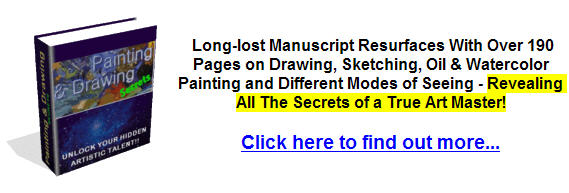Painting Nature Abstract Art
Many artists choose abstract painting to express themselves, as the absence of content makes it easier to convey (and later interpret) emotion. Interpreting nature in abstract painting is a great way to find inspiration, and often results in very fascinating artworks. This article will look at one way to create a still life using nature as inspiration, but do not be confined by the directions and tips that you find here – painting abstract art is different for every person, and you’ll only feel truly free in your painting when you find your own style. To start off with, you need to decide what in nature you want to paint. You can paint it from life or a photograph, either will do fine. You can find photos on the net (there are some great reference journals online, put together specifically for artists), in magazines and in books. Spend some time just looking at what you’ve chosen to paint. If you’re studying it from life (and if it isn’t an animal and so won’t leap away), pay attention to your other senses as well: What does it feel like? Is it rough or smooth? Warm or cold? Really try to feel the essence of it. Once you’ve gotten to know your subject well enough, put together a basic color palette to begin with. Find the colors that you think really define your subject, and paint the background color on your canvas. Use more than one color if you want to, and when you’re done with the background, leave it to dry completely. Next, find the lines that you think sum up the action, life and overall feel of your subject (for example, the lines of a bird would be the beak, shape of the head and the wing). Paint these lines onto your canvas using whatever, and however many, paintbrushes you feel most comfortable with. When it comes to choosing colors for this, you can either go for colors complimentary to your background, making your subject stand out in your painting, or you can go for adjacent colors. Be bold with your painting, and don’t let fear stop you from exaggerating and using wild colors that aren’t in the scene or subject. If you want to add details to your subject, then adding textures, shadows and highlights can be very fun. Make your subject as realistic as you want it to be: there are no restrictions and rules in abstract painting, and nobody can tell you that you’ve done something “wrong”, no matter what you do with your painting. Also remember that you can stylize details if you want to, turn textures into patterns and play with heavily contrasted highlights and shadows. Remember that there is nothing to say that you have to depict a particular subject in your painting. You could paint without using any shapes or lines, and focusing on colors. If you get a new and fascinating idea half way through your painting, you can change what you’ve done, or change what you’re going to do – there’s nothing stopping you. It’s not important to paint your subject, but it is important to paint with inspiration.
Click here => http://oilpaintingtechniqueslessons.com/DickBlickArtSupplies.html | |
|


Master the Colours DVD...

|
Although every attempt has been made to make information as accurate as possible, we are not responsible for any errors that may appear.
© Copyright 2015, OilPaintingTechniquesLessons.com. All Rights Reserved.






